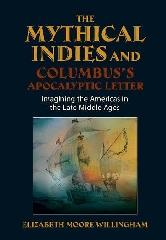With his "Letter of 1493" to the court of Spain, Christopher Columbus heralded his first voyage to the present-day Americas, creating visions that seduced the European imagination and birthing a fascination with those "new" lands and their inhabitants that continues today. Columbus' epistolary announcement travelled from country to country in a late-medieval media event - and the rest, as has been observed, is history. "The Letter" has long been the object of speculation concerning its authorship and intention: British historian Cecil Jane questions whether Columbus could read and write prior to the first voyage while Demetrio Ramos argues that King Ferdinand and a minister composed "The Letter" and had it printed in the Spanish folio. "The Letter" has figured in studies of Spanish Imperialism and of Discovery and Colonial period history, but it also offers insights into Columbus' passions and motives as he reinvents himself and retails his vision of Peter Martyr's 'Novus' orbis to men and women for whom Columbus was as unknown as the places he claimed to have visited. The central feature of the book is its annotated variorum edition of "The Spanish Letter", together with an annotated English translation and word and name glossaries. A list of terms from early print-period and manuscript cultures supports those critical discussions. In the context of her text-based reading, the author addresses earlier critical perspectives on "The Letter", explores foundational questions about its composition, publication and aims, and proposes a theory of authorship grounded in text, linguistics, discourse, and culture.

(0 Comentarios)